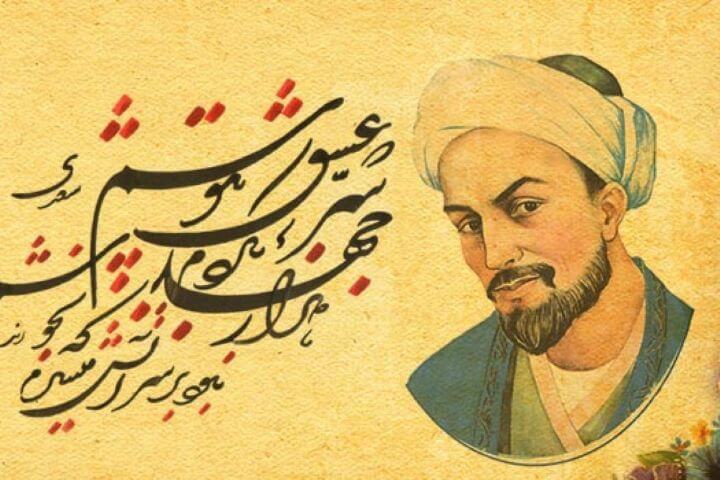Saadi Shirazi was a Persian poet, writer, and Sufi mystic who lived during the 13th century CE. This post provides a brief biography of Saadi Shirazi, highlighting his life and works, and explaining why he is famous for his poetry collections such as “Gulistan” and “Bustan.”
Saadi Shirazi (1184 – 1291), was a Persian Sufi poet, whose works combined a warmth of feeling and entertainment with religious mystical thought, An alternate form of his name is Sadi.
His original name was Abū-Muhammad Muslih al-Dīn bin Abdallāh Shīrāzī, but he later adopted the name Saadi, which was derived from the name of the rulers of Shiraz, his native city.

Saadi Shirazi
After studying in Baghdad and spending many years traveling, Saadi settled in Shiraz, where he enjoyed the favor of several Persian rulers. The Persians had high regard for his golden maxims, which they considered a treasure of true wisdom, and for his pure, simple, and elegant style.
Saadi’s most famous works are the Bustan (1257; Fruit Garden) and the Gülistan (1258; Rose Garden). There is also a collection (Diwan) of lyric poems, in Arabic and Persian. The Bastan, entirely in verse, is a collection of histories, fables, and moral instıuctions. The Gülistan, written in both verse and prose, contains personal recollections, aphorisms, and advice. His collected works appear in Persian and have been translated into English.
His best-known works are Bostan (The Orchard) and Golestan (The Rose Garden). The Bostan is completely in verse (epic meter) and consists of stories that adequately illustrate the standard virtues recommended to Muslims (justice, liberality, modesty, satisfaction), as well as reflections on the behavior of dervishes and their ecstatic practices. The Golestan is mainly in prose and contains personal stories and anecdotes. The text is interspersed with a variety of short poems, containing aphorisms, advice, and humorous reflections. Saadi demonstrates a deep awareness of the absurdity of human existence. The fate of those who depend on the changing mood of the kings is contrasted with the freedom of the dervishes.
Why is Saadi Shirazi famous?
Saadi Shirazi, also known as Sheikh Saadi, was a famous Persian poet and prose writer from the medieval period. He is considered one of the greatest poets of the classical Persian literature and his works have been widely read and translated into many languages.
Saadi Shirazi’s most famous work is the “Bustan” (The Orchard), a collection of poems and stories that convey moral and ethical messages. His other well-known work is the “Gulistan” (The Rose Garden), a book of prose that contains stories and aphorisms on a variety of topics such as justice, love, and wisdom.
Saadi’s works are revered for their lyrical quality, wit, and wisdom. He is often quoted in Persian culture and his works continue to be studied and admired by readers around the world.
What is the writing style of Saadi?
The writing style of Saadi Shirazi is characterized by his skillful use of language, his poetic expression, and his ability to convey moral and ethical messages through his works. His writing is known for its clarity, concision, and simplicity.
Saadi’s poetry is written in a lyrical style, with a focus on rhyme, meter, and rhythm. He often uses metaphor and symbolism to convey his message and create vivid imagery in the minds of his readers. His prose writing is characterized by a clear and concise style that uses simple language to convey complex ideas.
Saadi’s works often contain humorous anecdotes and stories that are intended to teach a moral lesson. He also frequently uses paradox and irony to make his points and provoke thought in his readers.
Overall, Saadi’s writing style is marked by its elegance, simplicity, and depth of meaning. He is considered one of the greatest poets of the Persian language, and his works continue to be studied and admired for their literary and philosophical value.